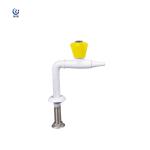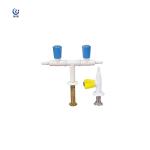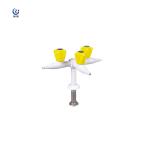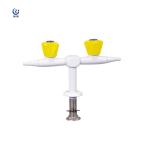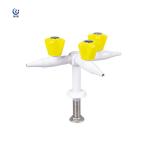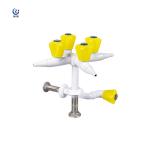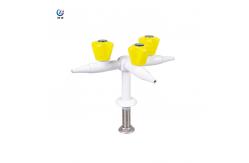Manual Gas Coke Valve for Laboratory Applications Precise Control: Laboratory gas valves are designed to provide
precise control over the flow of gases. They offer fine adjustments
to regulate the flow rate, allowing for accurate and repeatable
control in experimental setups. Versatility: These gas valves are versatile and can handle a wide
range of gases commonly used in laboratories, including inert
gases, flammable gases, and corrosive gases. They are designed to
withstand the specific properties and requirements of different
gases. Safety Measures: Laboratory gas valves incorporate safety features
to ensure the safe handling of gases. These may include built-in
pressure relief mechanisms, leak detection systems, and fail-safe
designs to prevent accidental releases or overpressure situations. Compatibility: They are designed to be compatible with various
laboratory equipment and systems. They can be easily integrated
into existing setups, such as gas distribution systems, gas
chromatography instruments, or other laboratory apparatus. Durability: Laboratory gas valves are constructed using durable
materials, such as stainless steel or corrosion-resistant alloys,
to withstand the demanding laboratory environment. They are built
to resist chemical corrosion, high pressures, and temperature
fluctuations. Easy Operation: These gas valves are designed for ease of use. They
often feature ergonomic handles or control mechanisms that allow
for smooth and effortless operation. Clear labeling and intuitive
design make them user-friendly even for inexperienced operators.
| Parameter | Description | | Type | The type of laboratory gas valve, such as manual valve, electric
valve, pneumatic valve, etc. | | Material | The material used in the construction of the gas valve, commonly
stainless steel, copper, plastic, etc. | | Connection | The type of connection used for the gas valve, such as threaded
connection, flange connection, quick-connect fitting, etc. | | Operating Pressure | The maximum operating pressure that the gas valve can withstand. | | Flow Characteristics | The flow characteristics of the gas valve, such as linear, equal
percentage, quick opening, etc. | | Control Method | The method used to control the gas valve, such as manual control,
electric control, pneumatic control, etc. | | Quick Switching Time | The time taken by the gas valve to switch from fully closed to
fully open or vice versa. | | Lifespan | The expected lifespan of the gas valve, typically measured in
operating cycles or hours of operation. | | Additional Features | Any additional features or functionalities that the gas valve may
have, such as position feedback sensor, manual emergency shut-off,
remote control interface, etc. | | Applications | The common laboratory applications where the gas valve is used,
such as gas control, fluid control, automation systems, etc. |
|
